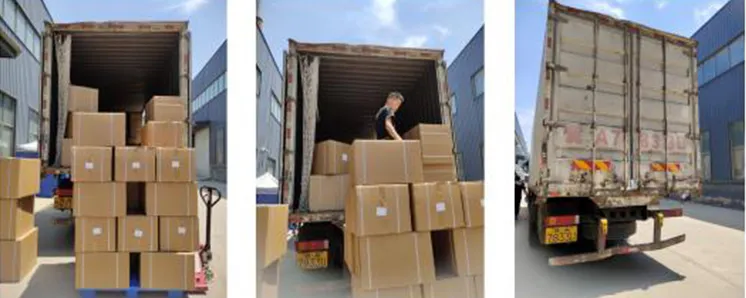
-
 Afrikaans
Afrikaans -
 Albanian
Albanian -
 Amharic
Amharic -
 Arabic
Arabic -
 Armenian
Armenian -
 Azerbaijani
Azerbaijani -
 Basque
Basque -
 Belarusian
Belarusian -
 Bengali
Bengali -
 Bosnian
Bosnian -
 Bulgarian
Bulgarian -
 Catalan
Catalan -
 Cebuano
Cebuano -
 Corsican
Corsican -
 Croatian
Croatian -
 Czech
Czech -
 Danish
Danish -
 Dutch
Dutch -
 English
English -
 Esperanto
Esperanto -
 Estonian
Estonian -
 Finnish
Finnish -
 French
French -
 Frisian
Frisian -
 Galician
Galician -
 Georgian
Georgian -
 German
German -
 Greek
Greek -
 Gujarati
Gujarati -
 Haitian Creole
Haitian Creole -
 hausa
hausa -
 hawaiian
hawaiian -
 Hebrew
Hebrew -
 Hindi
Hindi -
 Miao
Miao -
 Hungarian
Hungarian -
 Icelandic
Icelandic -
 igbo
igbo -
 Indonesian
Indonesian -
 irish
irish -
 Italian
Italian -
 Japanese
Japanese -
 Javanese
Javanese -
 Kannada
Kannada -
 kazakh
kazakh -
 Khmer
Khmer -
 Rwandese
Rwandese -
 Korean
Korean -
 Kurdish
Kurdish -
 Kyrgyz
Kyrgyz -
 Lao
Lao -
 Latin
Latin -
 Latvian
Latvian -
 Lithuanian
Lithuanian -
 Luxembourgish
Luxembourgish -
 Macedonian
Macedonian -
 Malgashi
Malgashi -
 Malay
Malay -
 Malayalam
Malayalam -
 Maltese
Maltese -
 Maori
Maori -
 Marathi
Marathi -
 Mongolian
Mongolian -
 Myanmar
Myanmar -
 Nepali
Nepali -
 Norwegian
Norwegian -
 Norwegian
Norwegian -
 Occitan
Occitan -
 Pashto
Pashto -
 Persian
Persian -
 Polish
Polish -
 Portuguese
Portuguese -
 Punjabi
Punjabi -
 Romanian
Romanian -
 Russian
Russian -
 Samoan
Samoan -
 Scottish Gaelic
Scottish Gaelic -
 Serbian
Serbian -
 Sesotho
Sesotho -
 Shona
Shona -
 Sindhi
Sindhi -
 Sinhala
Sinhala -
 Slovak
Slovak -
 Slovenian
Slovenian -
 Somali
Somali -
 Spanish
Spanish -
 Sundanese
Sundanese -
 Swahili
Swahili -
 Swedish
Swedish -
 Tagalog
Tagalog -
 Tajik
Tajik -
 Tamil
Tamil -
 Tatar
Tatar -
 Telugu
Telugu -
 Thai
Thai -
 Turkish
Turkish -
 Turkmen
Turkmen -
 Ukrainian
Ukrainian -
 Urdu
Urdu -
 Uighur
Uighur -
 Uzbek
Uzbek -
 Vietnamese
Vietnamese -
 Welsh
Welsh -
 Bantu
Bantu -
 Yiddish
Yiddish -
 Yoruba
Yoruba -
 Zulu
Zulu
More Language
Untranslated
កុម្ភៈ . 12, 2025 10:12
Back to list
transverse control arm
The transverse control arm, a pivotal component in the suspension systems of many vehicles, plays a crucial role in ensuring stability and control. This article explores the intricacies of transverse control arms, detailing expert insights, real-world experiences, and industry-authoritative commentary to provide a holistic understanding of its function and importance in vehicle dynamics.
Authoritative voices in automotive safety reinforce the safety implications of neglecting transverse control arm maintenance. A malfunctioning control arm not only affects vehicle alignment but could potentially lead to catastrophic wheel failure if left unaddressed. Therefore, routine inspections by certified technicians are highly recommended to ensure that this component functions as intended, safeguarding both vehicle performance and passenger safety. In the market, modern innovations in transverse control arm design include the incorporation of advanced materials like carbon fiber, which provide superior strength-to-weight ratios. These advancements reflect an industry-wide shift towards enhancing vehicle efficiency without compromising structural integrity. However, such technologies are generally found in high-performance or luxury vehicles and may not yet be accessible in mass-market models. For those in the market for replacement control arms, products are rated based on factors such as build quality, fitment precision, and durability. Consumers are encouraged to consult vehicle-specific forums and expert reviews to gather insights on brand reputation and product performance. Trustworthiness of information is paramount; thus, sourcing data from credible, industry-recognized platforms ensures that consumers make informed purchasing decisions. In conclusion, the transverse control arm is more than just a vehicle component; it is a fundamental element that underpins vehicle stability and performance. By understanding its function, maintaining it regularly, and selecting the right replacement components, vehicle owners can ensure a balance between driving safety and enhanced vehicle dynamics. As automotive technology evolves, continued advancements in control arm design will likely lead to even more refined vehicle handling characteristics, setting the stage for the next generation of automotive innovations.


Authoritative voices in automotive safety reinforce the safety implications of neglecting transverse control arm maintenance. A malfunctioning control arm not only affects vehicle alignment but could potentially lead to catastrophic wheel failure if left unaddressed. Therefore, routine inspections by certified technicians are highly recommended to ensure that this component functions as intended, safeguarding both vehicle performance and passenger safety. In the market, modern innovations in transverse control arm design include the incorporation of advanced materials like carbon fiber, which provide superior strength-to-weight ratios. These advancements reflect an industry-wide shift towards enhancing vehicle efficiency without compromising structural integrity. However, such technologies are generally found in high-performance or luxury vehicles and may not yet be accessible in mass-market models. For those in the market for replacement control arms, products are rated based on factors such as build quality, fitment precision, and durability. Consumers are encouraged to consult vehicle-specific forums and expert reviews to gather insights on brand reputation and product performance. Trustworthiness of information is paramount; thus, sourcing data from credible, industry-recognized platforms ensures that consumers make informed purchasing decisions. In conclusion, the transverse control arm is more than just a vehicle component; it is a fundamental element that underpins vehicle stability and performance. By understanding its function, maintaining it regularly, and selecting the right replacement components, vehicle owners can ensure a balance between driving safety and enhanced vehicle dynamics. As automotive technology evolves, continued advancements in control arm design will likely lead to even more refined vehicle handling characteristics, setting the stage for the next generation of automotive innovations.
Next:
Latest news
Understanding the Broken Control Arm: Key Insights for Car Owners
NewsJun.20,2025
The Essential Guide to Control Arms for Cars
NewsJun.20,2025
Discover Quality Control Arms for Your Vehicle
NewsJun.20,2025
Control Arm: Enhance Your Vehicle's Performance with Quality Parts
NewsJun.20,2025
Billet Control Arms: Elevating Your Suspension System
NewsJun.20,2025
Bent Control Arm: Understanding the Importance and Cost Implications
NewsJun.20,2025







